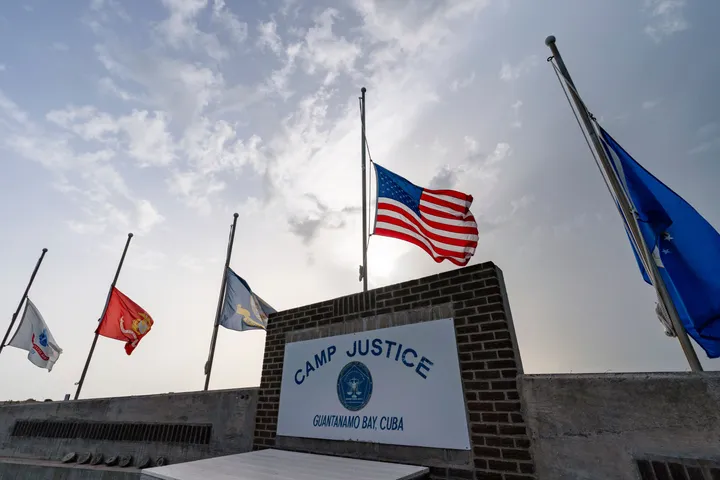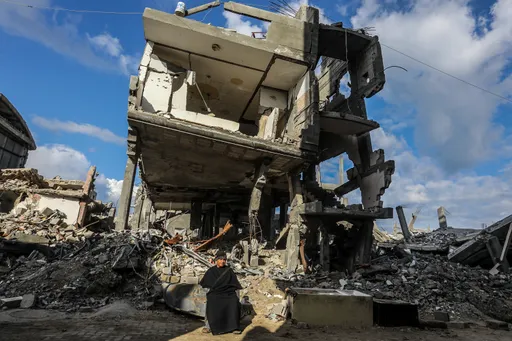Cyclone Mekunu will be "extremely severe" when it crashes into the Arabian Peninsula this weekend, meteorologists warned on Friday, after earlier thrashing the Yemeni island of Socotra.
At least 17 people are missing from Socotra, with one Yemeni official describing them as likely dead.
The cyclone is expected to make landfall early on Saturday near Salalah, Oman's third-largest city and home to some 200,000 people near the sultanate's border with war-ravaged Yemen.
Conditions quickly deteriorated in Salalah after sunrise on Friday, with winds and rain beginning to pick up.
Strong waves smashed into empty tourist beaches. Many holidaymakers fled the storm on Thursday night before Salalah International Airport closed.
India's Meteorological Department said the storm in the Arabian Sea was packing maximum sustained winds of 160-170 kilometres (99-106 miles) per hour, with gusts of up to 180 kph (112 mph).
Socotra rains
On Socotra, Govenor Ramzy Mahrous said one ship sank and two others ran aground in the storm. The storm sent torrents of rain pouring through homes and streets, leaving residents soaking wet and trying to wade to safety.
He said of the 17 missing: "We consider them dead."
Yemen's self-exiled President Abed Rabbo Mansour Hadi in a statement ordered troops under his command on the island to help citizens, deliver supplies and reopen roads.
The island, listed by UNESCO as a World Heritage Site, has been the focus of a dispute between the United Arab Emirates and Yemen's internationally recognised government amid that country's war after Shia rebels, known as Houthis, seized the Yemeni capital, Sanaa.
Saudi troops recently deployed on Socotra as a confidence-building measure over complaints by Yemen's government that the UAE deployed troops there without its permission.
Socotra has a unique ecosystem and is home to rare plants, snails and reptiles that can be found nowhere else on the planet.
It is known for its flower-and-fruit bearing dragon blood tree, which resembles an umbrella and gets its name from the dark red sap it secretes.
Flash-flood fears
Salalah, the hometown of Oman's longtime ruler, Sultan Qaboos bin Said, already began sandbagging low-lying doors and warning residents not to go into valleys for fears of flashing flooding.
Oman sent rescue helicopters to remote villages in its Dhofar governorate to evacuate those who could be impacted by flooding or mudslides. It also evacuated the critically ill from Sultan Qaboos Hospital in Salalah, flying them north to Muscat, the country's capital.
The port of Salalah, crucial to Qatar amid a boycott by four Arab nations over a diplomatic spat with Doha, said it also had taken precautions and secured cranes ahead of the cyclone.
Seasonal rains are nothing unusual for southern Oman this time of year.
While the rest of the Arabian Peninsula bakes in areas where temperatures near 50 degrees Celsius (122 degrees Fahrenheit), those in the sleepy port city of Salalah enjoy rainy weather that sees fog and cool air wrap around its lush mountainsides.
Temperatures drop down around 25 degrees Celsius (77 degrees Fahrenheit) during its annual monsoon festival.
Powerful cyclones, however, are rare. Over a roughly 100-year period ending in 1996, only 17 recorded cyclones struck Oman. In 2007, Cyclone Gonu tore through the sultanate and later even reached Iran, causing $4 billion in damage in Oman alone and killing over 70 people across the Middle East.
The last hurricane-strength storm to strike within 160 kilometres (100 miles) of Salalah came in May 1959, according to the US National Oceanic and Atmospheric Administration's archives. However, that cyclone was categorised as a Category 1 hurricane, meaning it only had winds of up to 152 kph (95 mph).
A cyclone is the same as a hurricane or a typhoon; their names only change because of their location. Hurricanes are spawned east of the international date line. Typhoons develop west of the line and are known as cyclones in the Indian Ocean and Australia.
Mekunu, which means "mullet" in Dhivehi, the language spoken in the Maldives, is on track to potentially be the same strength as a Category 2 hurricane at landfall. It also comes just days after Cyclone Sagar struck Somalia.
























